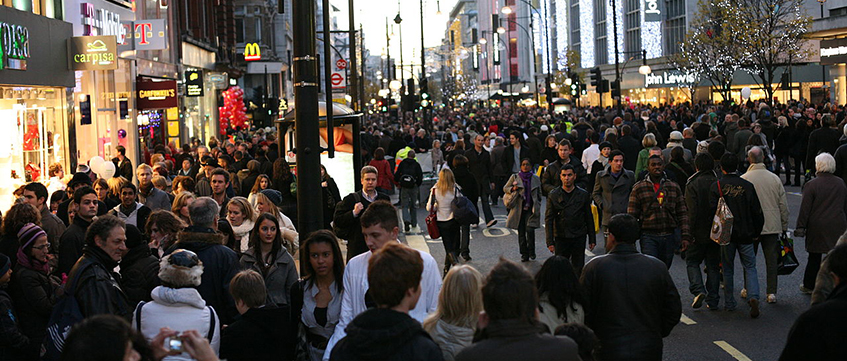The total store count on Oxford Street, W1, has decreased from 285 to 228 since 1993, primarily as a result of “knock-throughs” driven by retailer demand for large flagship units.
According to Savills, there has been a net loss of 50 units in the street over the past 25 years, of which 29 were east of Oxford Circus, excluding stores affected by Crossrail development works.
Looking further back to 1968, the firm reports that fashion retailers dominated Oxford Street, accounting for 32% of stores compared to 29.4% in 2017.
The most notable increase in fashion occupiers has been the rise of those selling both menswear and womenswear, now occupying 19.3% of stores compared to just 2.2% 50 years ago.
Units occupied by specialist menswear retailers have seen the most dramatic decline, currently occupying 1.8% of units compared to 9.1% in 1993 and 11.8% in 1968.
Health and beauty retailers have gained considerable market share on Oxford Street, increasing from 1.1% of stores in 1968 to 7.5% in 2017.
Anthony Selwyn, head of central London retail at Savills, said: “While larger flagship stores will always play an important role on Oxford Street, we are also seeing a wide spectrum of potential tenants looking for smaller units of less than 10,000 sq ft.
“Higher rents and rates, as well as growth in online shopping, are all contributing to store consolidation, with some retailers finding that the costs associated with smaller format stores are ultimately easier to handle.”
The research also highlights that Oxford Street’s occupier line-up has become less diverse, with 142 fascias across 29 retailer categories in 2017 compared to 177 fascias across 33 retailer categories in 1993.
In 1968, the offer was even more restricted with just 25 types of retailer present, though there were 199 different fascias due to the large number of independent retailers.
While the evolution of nearby pitches including Carnaby Street contributes to an overall diverse retail offer in the area today, a greater variety of fascias on Oxford Street would help to maintain its long-term attractiveness as a place to shop.
Sam Foyle, Oxford Street specialist at Savills, added: “Oxford Street’s once predominantly domestic retailer mix has developed into a very international one, with almost a third of stores let to non-domestic brands in 2017 compared to only 7% in 1993.
“This internationalisation of the retail offer really started to take hold with the entrance of US brands in the early 1990s, followed by more rapid activity from the large European groups such as Inditex and H&M.
“Today, European retailers occupy 21.1% of all stores on the street, up from 4.9% 25 years ago.”
Retailer churn has always been a natural part of Oxford Street’s evolution, with just 6.5% of the 1968 fascias and 19.2% of the 1993 fascias still present today.
This is apparent from the regular change in the most prolific retailers found on the street: Dolcis had most stores in 1968 (seven units), Sockshop led in 1993 (six units) and Boots has the most in 2017 (five units).
Department stores are the most likely to have remained in situ for the past 50 years, says Savills, though H Samuel and Boots have also retained their stores at 250 and 385/389 Oxford Street, respectively, throughout that time.
To send feedback, e-mail amber.rolt@egi.co.uk or tweet @AmberRoltEG or @estatesgazette











